Mastering Content Distribution Tactics: A Comprehensive Guide
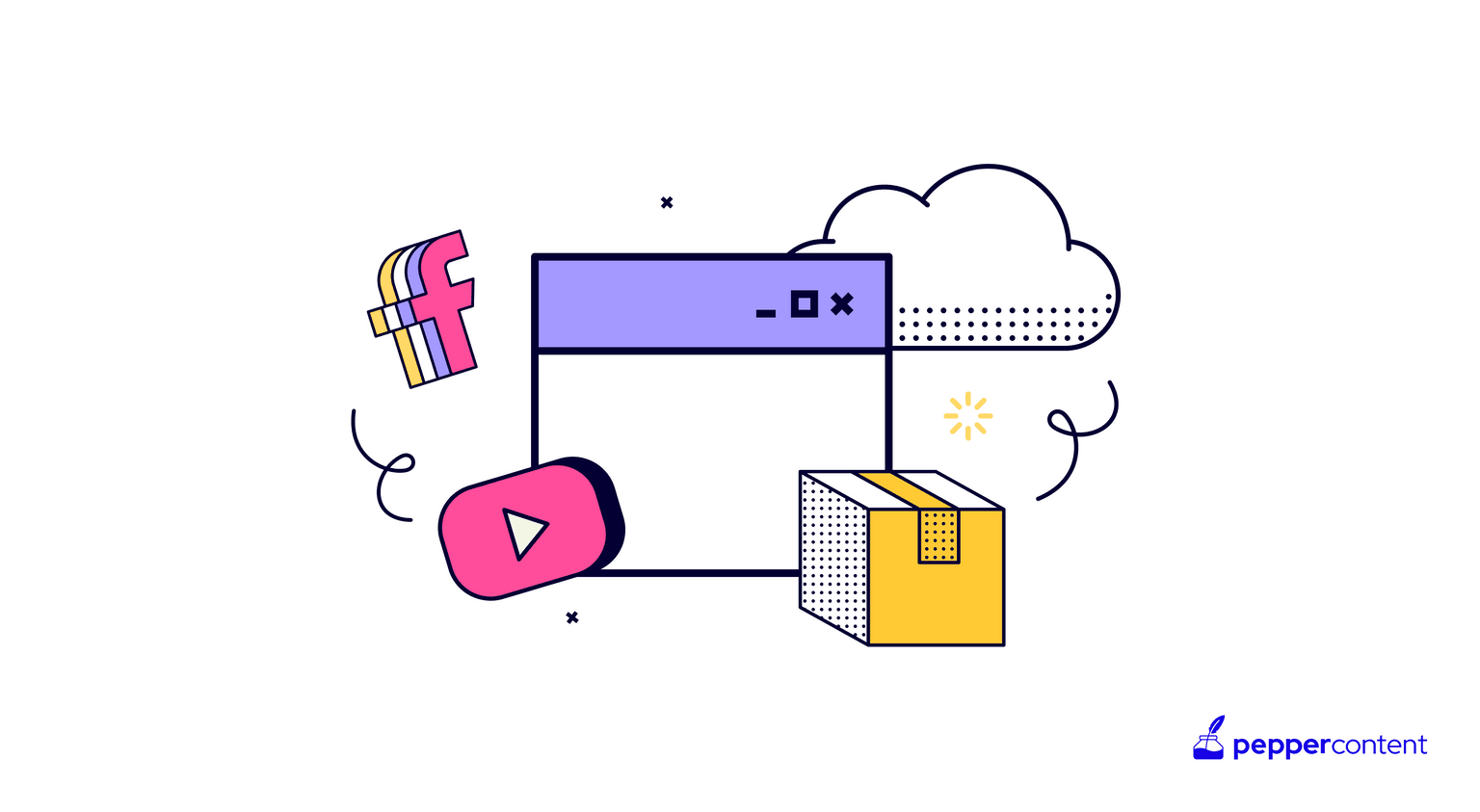
Content distribution refers to the strategic process of disseminating and promoting content across various channels to reach a wider audience. It involves utilizing owned, earned, and paid media platforms to maximize the visibility and impact of your content.
Creating valuable and engaging content is only half the battle; distributing it effectively is equally crucial. Without well-executed content distribution strategies, even the most exceptional content may go unnoticed.
By strategically distributing your content through different channels, you can expand your reach, increase brand awareness, drive website traffic, generate leads, and ultimately boost conversions.
Content distribution enables you to connect with your target audience on their preferred platforms, amplifying your message and ensuring that it reaches the right people at the right time. So, let’s dive into the three types of content distribution channels that can help you achieve maximum reach.
Three Types of Content Distribution Channels
Content distribution is essential for reaching a wider audience and maximizing the impact of your content marketing efforts. There are three main types of content distribution channels: owned, earned, and paid media channels. Each type offers its unique benefits and limitations.
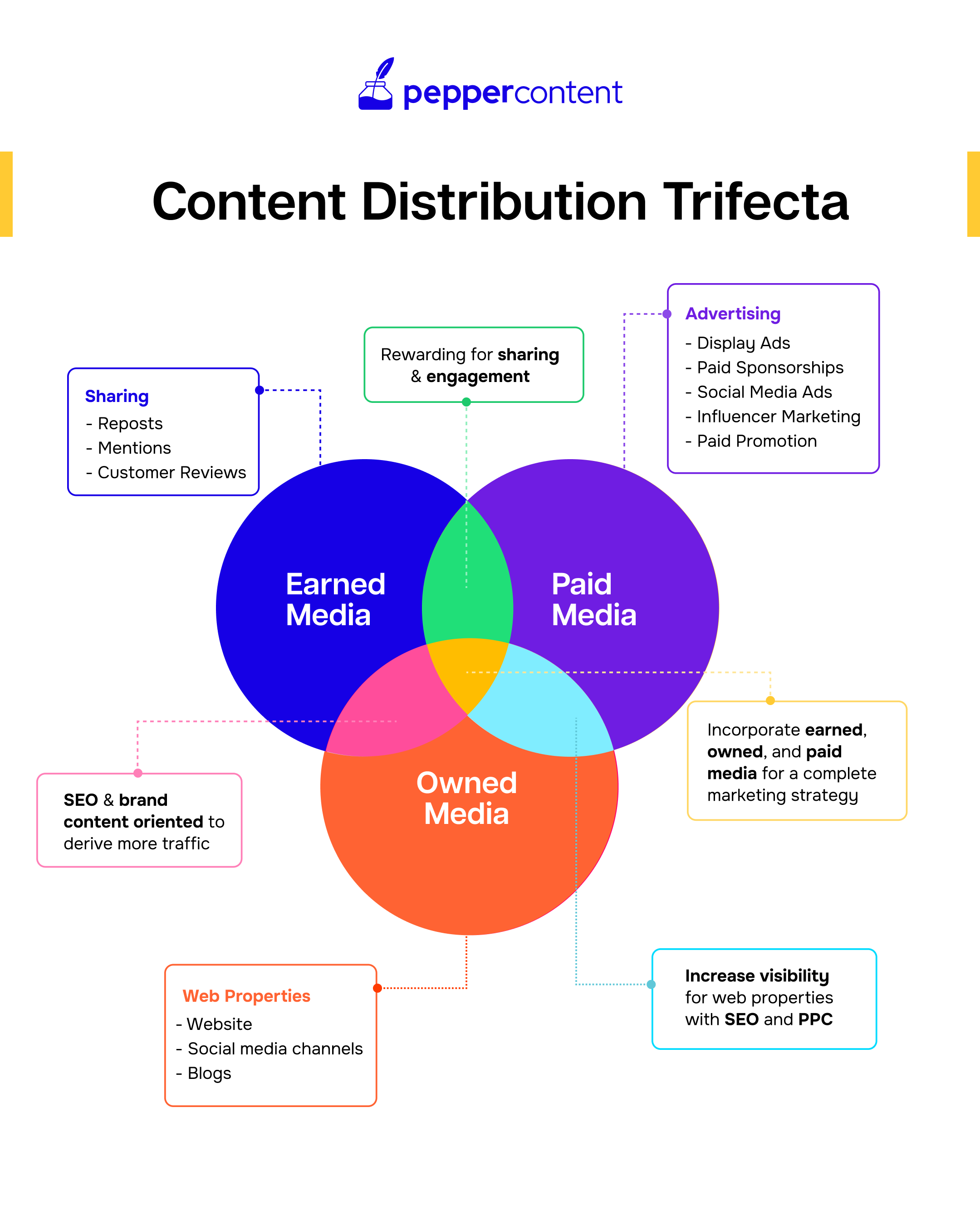
Owned media channels
They are the platforms that you have complete control over, such as your website, blog, and social media profiles. These channels allow you to publish and distribute content directly to your audience without relying on third-party platforms. Your website serves as the hub of your online presence, while your blog enables you to share in-depth articles and thought leadership. Social media profiles like Facebook, Twitter, and Instagram provide additional opportunities to engage with your audience.
The benefits of owned media channels include complete control over your content and messaging. You have the freedom to customize the design, layout, and tone of your content to align with your brand identity. However, owned media channels may have a lower reach compared to other distribution channels. While you have control over distribution, it can be challenging to attract new audiences beyond your existing follower base.
Earned media channels
They refer to the exposure and visibility you gain through third-party endorsements or mentions. Examples include press coverage, influencer mentions, and user-generated content. When reputable sources or influential individuals talk about your brand or share your content with their audiences, it enhances your credibility and exposes you to new potential followers.
Earned media channels offer increased credibility through third-party endorsements. When a respected publication features an article about your brand or an influencer shares positive feedback about your product/service, it builds trust with potential customers. However, earned media also has its limitations. You have less control over the narrative or timing of the coverage or mentions. It requires building relationships with journalists, influencers, and customers who can amplify your message.
Paid media channels
They involve investing financial resources into advertising platforms to promote your content. Examples include social media ads, search engine marketing, and sponsored content. Paid media channels allow you to target specific audiences based on demographics, interests, and online behavior. This targeted approach ensures that your content reaches the right people at the right time.
The benefits of paid media channels lie in their ability to provide targeted reach. By advertising on platforms like Facebook Ads or Google Ads, you can narrow down your audience based on specific criteria and increase the chances of your content resonating with them. However, the costs associated with sustained paid campaigns can be high, making it important to carefully allocate your budget and track the performance of your ads.
Distribution Channel You Should Choose
To maximize content distribution strategies, it’s essential to incorporate a combination of owned, earned, and paid media channels.
Red Bull is an excellent example of a brand that leverages all three types effectively. They have their website and blog for owned media distribution, collaborate with extreme sports influencers for earned media exposure, and invest in sponsorship deals for paid media reach.
By diversifying your distribution channels, you can extend your reach and engagement levels while maintaining control over your branding and messaging. Remember to adapt your content format and tone to suit each platform and consider collaborating with influencers to amplify reach. Additionally, leverage data analytics to refine your distribution strategy by analyzing key metrics such as engagement rates, reach, and conversion rates.
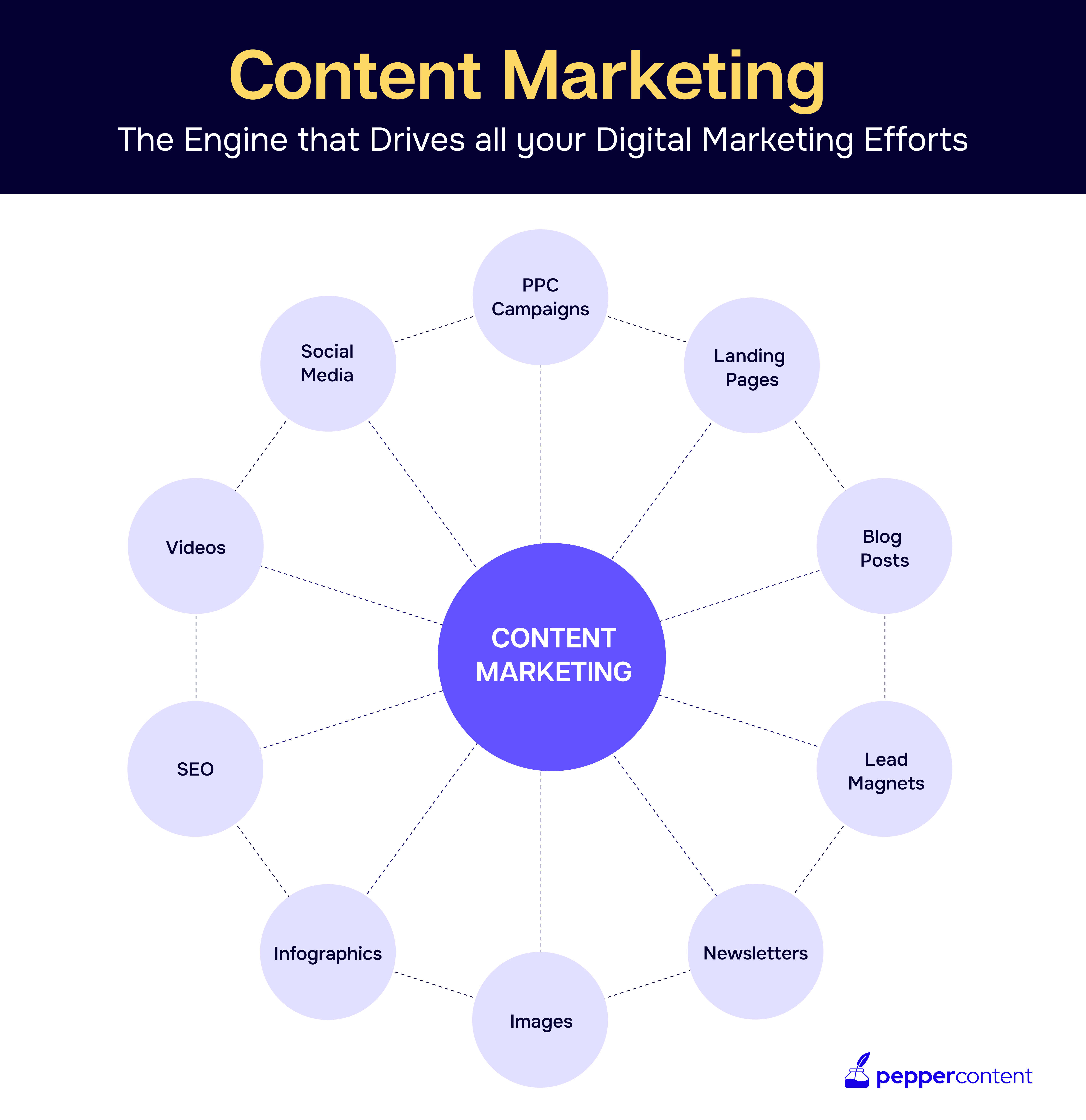
With a robust content marketing distribution plan that incorporates all types of channels, you can ensure maximum reach for your content marketing efforts and achieve better results in engaging with your target audience.
Best Practices for Creating Content Distribution Strategy
Creating an effective content distribution strategy requires careful planning and consideration. By following these best practices, you can ensure that your content reaches the right audience through the most suitable channels.
Identify your target audience
Before you begin distributing your content, it’s crucial to understand who your target audience is. Conducting audience research allows you to tailor your content to their interests and preferences. According to HubSpot’s State of Inbound report, personalized content is more effective in engaging audiences.
To gather insights about your audience, consider using various strategies such as surveys, social listening, and customer interviews. Surveys can provide valuable information about their demographics, interests, and pain points. Social listening involves monitoring conversations on social media platforms to gain insights into their preferences and challenges. Additionally, conducting customer interviews can help you understand their motivations and needs.
Choose the right distribution channels
Selecting the appropriate distribution channels is crucial for reaching your target audience effectively via your content distribution plan. It’s essential to align your channel selection with your audience’s preferences. For example, if you’re targeting Gen Z, platforms like TikTok and Instagram may be more suitable than LinkedIn.
Diversifying your distribution channels can also help you reach a wider audience. By utilizing a combination of owned media channels (such as your website and blog), earned media channels (such as press coverage and user-generated content), and paid media channels (such as social media ads and sponsored content), you can maximize your reach across different platforms.
Optimize your content for each channel
Tailoring your content format to suit specific distribution channels is essential for capturing the attention of your audience. BuzzFeed, for example, creates listicles for its website, short videos for social media platforms like Facebook and Instagram, and long-form articles for publishing platforms like Medium.
Adapting your messaging and tone to fit each platform’s audience is also crucial. Wendy’s Twitter account gained popularity by adopting a snarky and humorous tone when responding to customers. By understanding the preferences and communication styles of each platform’s audience, you can create content that resonates with them.
Remember, a successful content distribution strategy is not a one-size-fits-all approach; it requires continuous monitoring and adaptation to ensure your content resonates with your audience across different channels.
Tips for a Better Content Distribution Model
Creating and distributing great content is just the first step in a successful content marketing strategy. To truly maximize your reach and engagement, you need to have a well-thought-out content marketing distribution plan or model. Here are some tips to help you improve your content distribution tactics and get your content in front of the right audience.
1. Repurpose content across different formats and channels
Repurposing your content is one of the most effective ways to extend its reach. By adapting your content for different formats and channels, you can appeal to a wider audience. For example, turning a blog post into an infographic can attract visual learners on social media platforms, while repurposing a video into a podcast episode can engage audio enthusiasts.
The advantages of repurposing content are twofold. First, it allows you to make the most of your existing content investments by extracting more value from each piece. Second, it enables you to cater to different audience preferences and consumption habits.
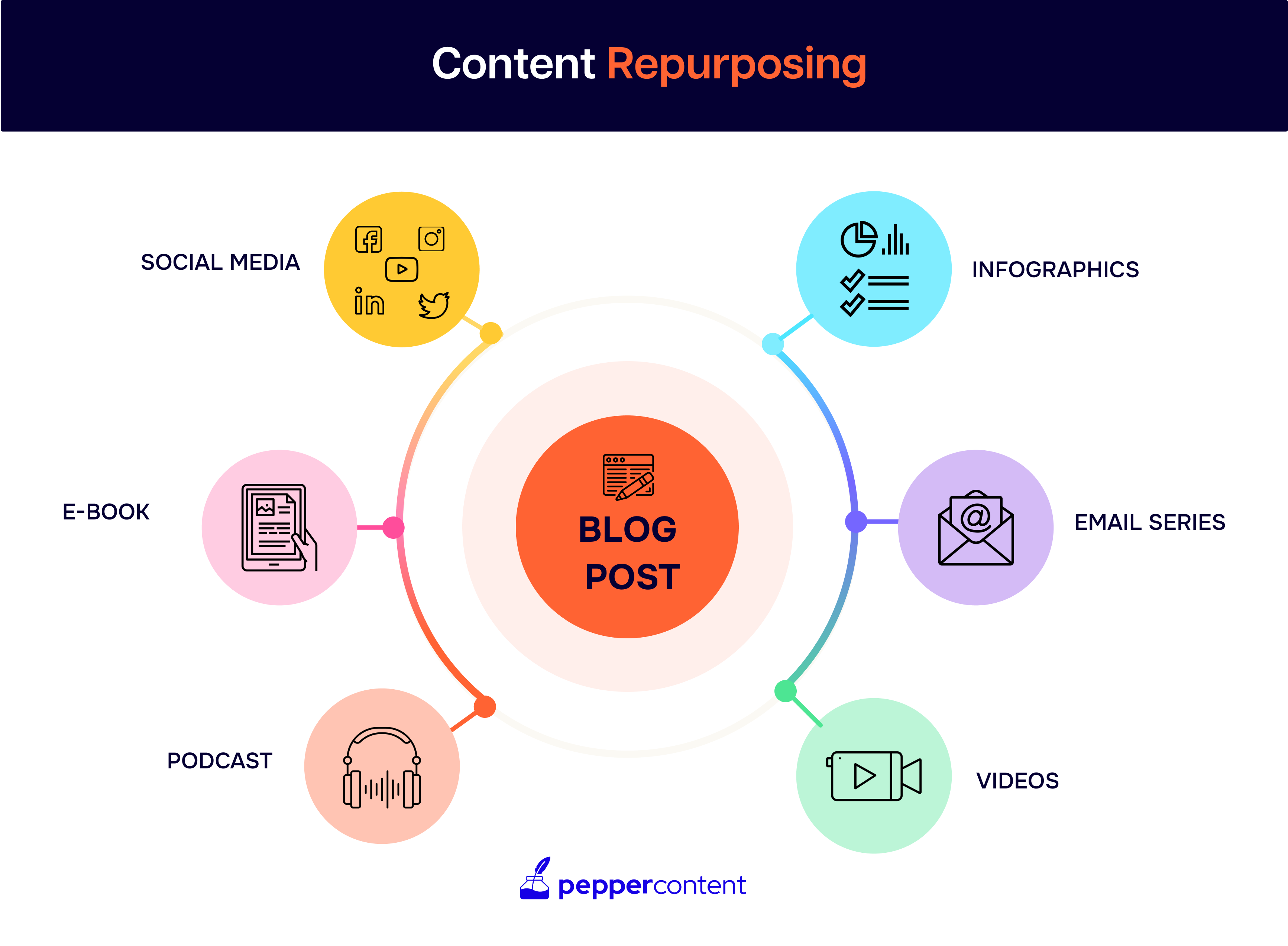
2. Collaborate with influencers and thought leaders for amplified reach
Influencer marketing has become an integral part of many successful content distribution strategies. Partnering with influencers and thought leaders in your industry can help amplify your reach and increase brand awareness.
When selecting influencers to collaborate with, it’s important to consider their relevance to your target audience and their authority within the industry. Look for influencers who align with your brand values and have an engaged following that matches your target demographic.
To ensure successful influencer collaborations, establish clear goals and expectations from the outset. Provide influencers with creative freedom while maintaining brand guidelines to maintain consistency across platforms.
3. Leverage data analytics to refine your distribution strategy
Data-driven decision-making is crucial for optimizing content distribution strategies. By analyzing key metrics, you can gain valuable insights into how your content is performing and make informed decisions on how to refine your distribution tactics.
Metrics such as engagement rates, reach, and conversion rates can help you understand which channels and formats are resonating with your audience. Use analytics tools like Google Analytics, social media insights, and email marketing platforms to track the performance of your content across various channels.
By continually refining your content distribution strategy based on data-driven insights, you can ensure that your content reaches the right audience at the right time and in the most effective way possible.
Presenting Pepper CMP
Throughout this article, we’ve explored the various types of content distribution channels and the importance of creating a robust content distribution strategy. Implement these tactics to maximize your content’s reach and engage wider audiences. Worried about doing it all without any professional help? Try Pepper CMP to accelerate your revenue with content marketing.
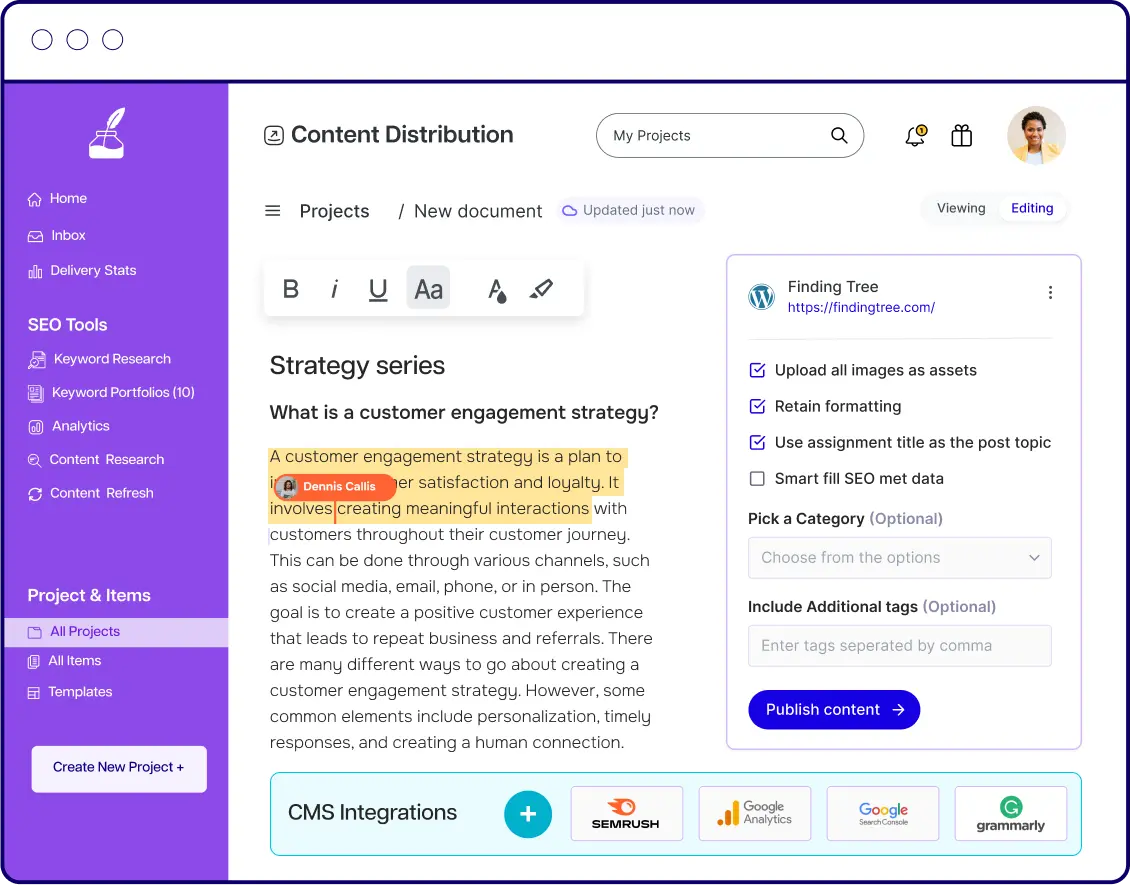
Pepper CMP helps marketing teams ideate, create, and distribute content fast and at scale with the power of generative AI and our expert talent network. Pepper Content enables CMOs at enterprises and fast-growing companies to grow ROI and revenue by helping them create high-quality content and track its lifecycle in one collaborative platform.
Here, you can publish your content in a few clicks because the platform integrates integration seamlessly with your preferred CMS. It helps in quick distribution to reach your audience and a hassle-free publishing experience with no additional formatting! Book a trial now!
Latest Blogs
Learn how to rank on AI search engines like ChatGPT, Perplexity, and Gemini by optimizing your content for authority, structure, and relevance. Stay ahead in AI-driven search with this strategic guide.
Explore the best healthcare SEO services for your medical practice. Improve online visibility and effectively reach more patients in need of your services.
Discover top social media agencies specializing in banking solutions, enhancing financial services and driving engagement.
Get your hands on the latest news!
Similar Posts

Content Operations
4 mins read
Streamlining Your Process: The Importance of Content Workflow Management

Content Operations
6 mins read
To Outsource Content Creation or Not? Pros And Cons Explained

Content Operations
7 mins read